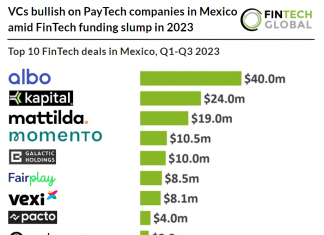P&C and health pricing teams operate in a dynamic environment. They need to ensure that their current pricing strategy is not only appropriate for their policyholders but also accurately aligned with the evolving competitive and regulatory landscape. In reality, pricing executives act as insurance portfolio managers, constantly monitoring margins, loss ratios, and GWP to align with both the insurer’s overall strategy and market competition. Recent regulations such as the UK’s Customer Duty, also highlight the necessity for real-time identification of risk outliers within portfolios and the ability to explain these outliers to regulators, making this capability a regulatory requirement.
Dynamic insurance pricing software platform Quantee opens up on how to master insurance portfolio management.
Real-time data feed
One early challenge for insurance companies in achieving effective portfolio management is collecting all the necessary data. The types of data typically used to monitor portfolio performance include:
The main challenges around feeding these data sources are:
- Connecting portfolio management tools with quotation data from rating engines, given the complexity of different business lines, sales channels, and multiple versions of production pricing strategies.
- The time offset between quotation and the decision of potential policyholders to convert or renew, and the difficulties in collecting this data.
- Linking to other data sources such as claims, financial, and external data, and maintaining a constant connection between quotation data and these other sources.
A single but powerful piece of advice: insurers should invest their time and resources now to clean up data sources and unlock the benefits of real-time portfolio management.
The earlier this is done, the lower the risk of losing a competitive edge in the market.
Monitoring dashboards
The ability to identify underperforming segments, control portfolio structure, and make informed pricing decisions starts with proper monitoring capabilities. These should meet the following criteria:
- Consuming real-time data feeds and adjusting/processing them for insurance executives and pricing teams.
- Containing pricing-specific charts, such as impact analysis, one-ways, and loss ratio histograms/heatmaps, which are usually not available in generic BI tools, necessitating investment in open-source or actuarial software.
- Being flexible enough to perform drill-down analysis for specific segments and segment interactions, as well as showing overall portfolio performance.
Monitoring dashboards are essential for any executive to make informed decisions on pricing strategy.
What sets companies apart competitively are the next two topics: automated portfolio alerts and integrated forecasting/reaction capabilities.
Portfolio alerts
Insurers can reduce their combined ratios by up to 6 percentage points, translating to billions of dollars, if they can streamline the time-consuming, fragmented pricing process.
Time-to-market has become a critical factor for pricing teams due to the competitive market, ever-changing regulatory landscape, and expectations of digitalised policyholders.
One way to improve the pricing process is by reducing the reaction time between an event in the insurance portfolio (e.g., a conversion drop for a specific segment) and the moment the pricing team realises it.
Utilising real-time quotation/conversion data in algorithms to recognise portfolio patterns and inform pricing executives about underperforming segments or dangerous outliers can significantly enhance time-to-market.
This is particularly crucial in countries like the UK, where the Customer Duty regulation requires insurers to actively recognise and explain risk outliers in their portfolio.
Integrated reaction & forecasting
Having portfolio monitoring dashboards and/or automated portfolio alerts offers tremendous benefits for insurers.
Another step in portfolio management sophistication is integrating portfolio management tools with analytical environments where risk, demand, and pricing models are created. This facilitates quick reactions to any dynamics within the insurance portfolio.
This integration allows pricing executives to collaborate with analysts, enabling them to recognise events in the portfolio, adjust pricing strategies, and forecast impacts swiftly, giving them a competitive market edge.
This should be seen as the ultimate goal for chief pricing officers in every insurance carrier to achieve an effective pricing strategy.
A simple recipe
Successful insurance portfolio management relies on several key strategies. First, prioritising data is crucial, ensuring that quotation, conversion, claims, financial, and external data sources are updated in real-time.
Secondly, investing in dedicated solutions for portfolio monitoring tailored to specific business line needs is essential.
Moreover, advancing pricing sophistication involves considering portfolio alerts and integrating ecosystems with modelling environments to identify outliers early, enabling swift reactions with updated pricing strategies.
Insurance pricing software provider Quantee can become the perfect partner to enable you to build a robust portfolio management experience through their unbridled expertise and software.
Read the full blog from Quantee here.
Keep up with all the latest FinTech news here.
Copyright © 2024 FinTech Global











